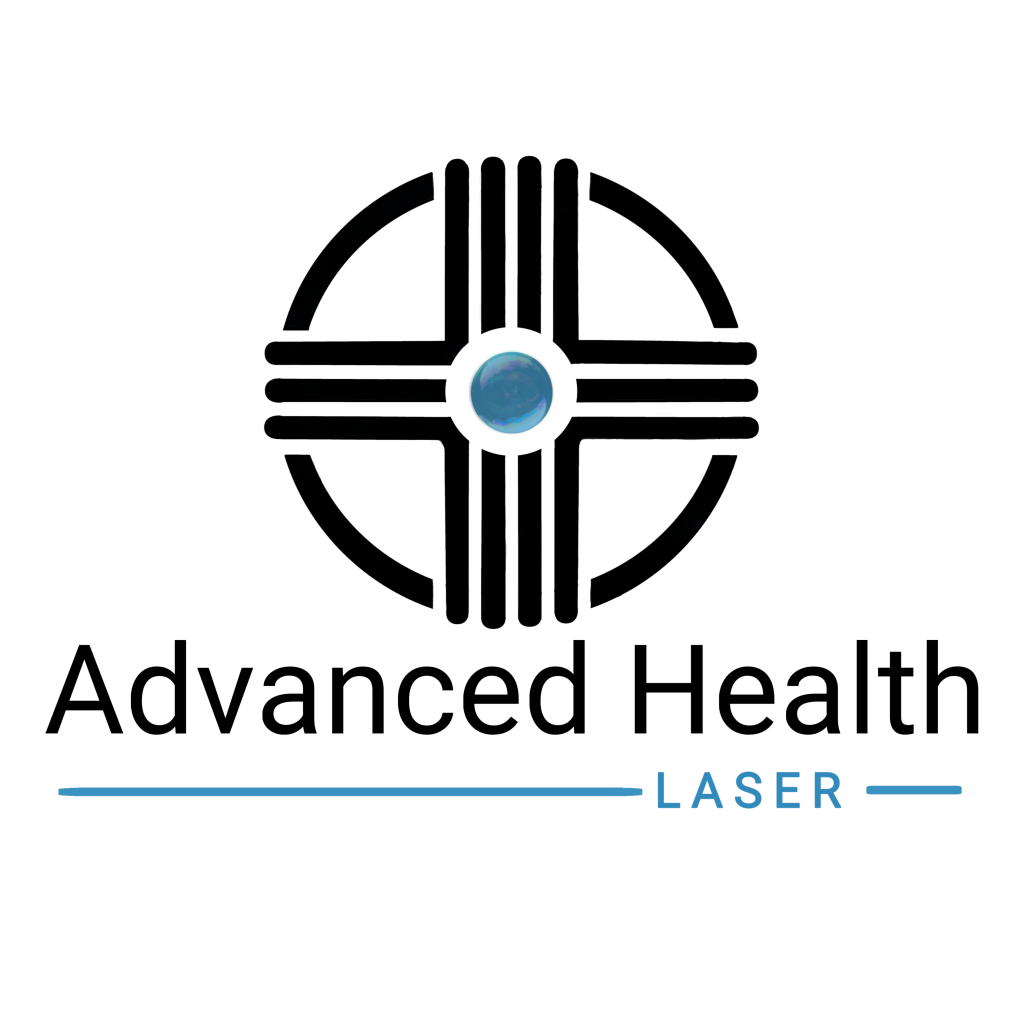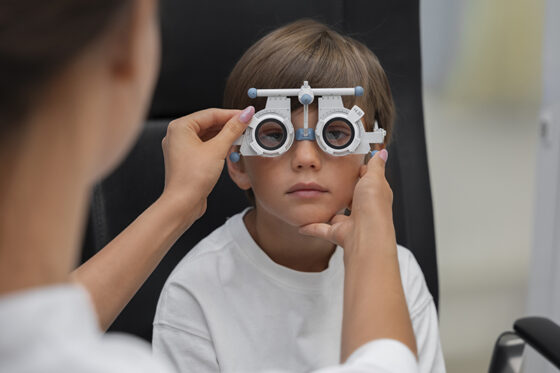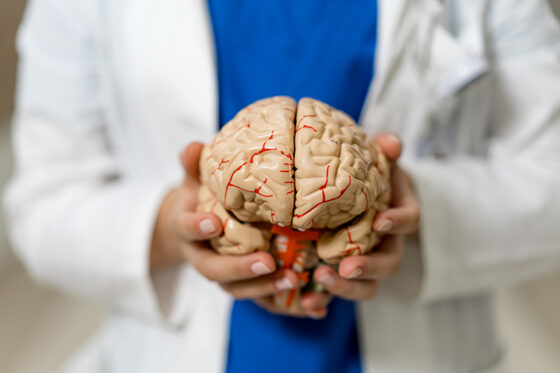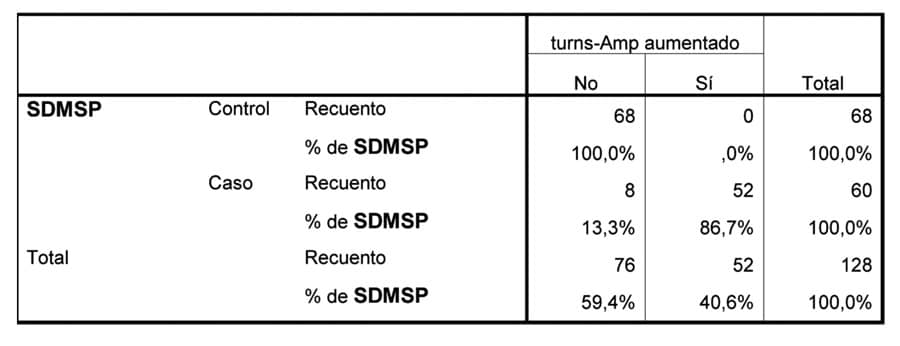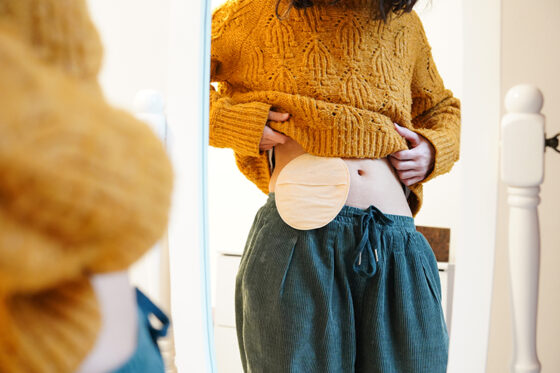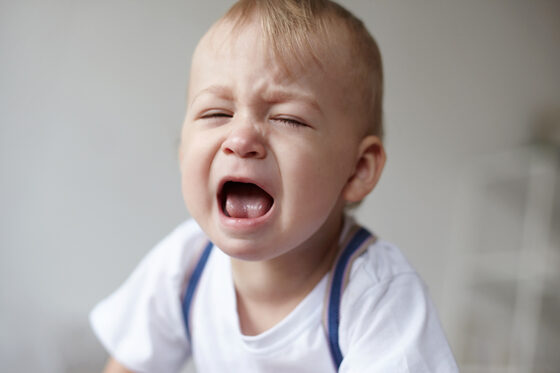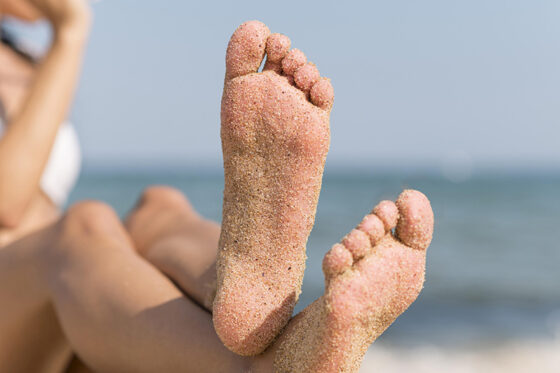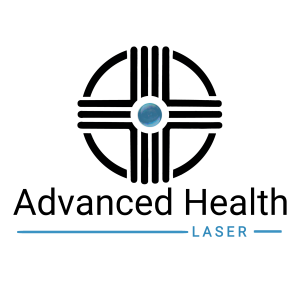La entrada Referencia bibliográficas es un artículo original de Clinica Itza.
- Fall M, Baranowski AP, Elneil S, et al. EAU guidelines on chronic pelvic pain. European Association of Urology. Eur Urol 2010; 57(1):35-48.
- Travell J, Simons D. Dolor y disfunción miofascial. El Manual de los Puntos Gatillo. Vol. 2.1999 pp. 137-163. Ed. Panamericana.
- Travell J, Simons D. Dolor y disfunción miofascial. El Manual de los Puntos Gatillo. Vol. 1.1999 pp. 138-152. Ed. Panamericana.
- Sinaki M, Merritt JL, Stillwell GK: Tension myalgia of the pelvic floor. Mayo Clin Proc 1977; 52(11): 717-22.
- Zermann DH, Ishigooka M, Doggweiler R, Schmidt RA. Chronic Prostatitis: A Myofascial Pain Syndrome? Infect Urol 12(3):84-88, 92, 1999.
- Anderson RU, Sawyer T, Wise D, Morey A, Nathanson BH. Painful myofascial trigger points and pain sites in men with chronic prostatitis/chronic 99 pelvic pain syndrome. J Urol. 2009; 182(6):2753-8.
- Anderson RU, Wise D, Sawyer T, Chan Ca. Sexual dysfunction in men with chronic prostatitis/chronic pelvic pain syndrome: improvement after trigger point release and paradoxical relaxation training. J Urol. 2006; 176(4 pt 1):1534-8; discussion 1538-9.
- Itza F, Zarza D, Serra L, Gómez-Sancha F, Salinas J, Allona-Almagro A. Myofascial pain syndrome in the pelvic floor: a common urological condition. Actas Urol Esp. 2010; 34(4):318-26.
- Potts J, Payne RE. Prostatitis: Infection, neuromuscular disorder, or pain syndrome? Proper patient classification is key. Cleve Clin J Med. 2007; 74 Suppl 3:S63-71. 7.
- Forrest JB, Nickel JC, Moldwin RM. Chronic prostatitis /chronic pelvic pain syndrome and male interstitial cystitis: enigmas and opportunities. Urology. 2007; 69(4 Suppl):60-3.
- Langford CF, Udvari Nagy S, Ghoniem GM. Levator ani trigger point injections: An underutilized treatment for chronic pelvic pain. Neurourol Urodyn. 2007; 26(1):59-62.
- Burkhard FC, Blick N, Hocreiter WW, Studer UE. Urinary urgency and frequency, and chronic urethral and/or pelvic pain in females. Can doxycicline help? J Urol 2004; 172(1):232-235.
- Chung MK, Chung RP, Gordon D, Jennings C. The evil twins of chronic pelvic pain syndrome: endometriosis and interstitial cystitis. JSLS. 2002; 6:311-314.
- Pukall CF, Baron M, Amsel R, Khalifé S, Binik YM. Tender point examination in women with vulvar vestibulitis syndrome. Clin J Pain. 2006; 22(7):601-9.
- Matheis A, Martens U, Kruse J, Enck P. Irritable bowel syndrome and chronic pelvic pain: a singular or two different clinical syndrome?. World J Gastroenterol. 2007; 13(25):3446-55.
- Fishbain DA, Goldberg M, Meagher BR, Steele R, Rosomoff H. Male and female chronic pain patients categorized by DSM-III psychiatric diagnostic criteria. Pain. 1986;26(2):181-97
- Bartoletti R, Cai T, Mondaini N, Dinelli N, Pinzi N, Pavone C et al; Italian Prostatitis Study Group. Prevalence, incidence estimation, risk factors and characterization of chronic prostatitis/chronic pelvic pain syndrome in urological hospital outpatients in Italy: results of a multicenter case-control observational study. J Urol. 2007; 178(6):2411-5.
- Müller A, Mulhall JP. Sexual dysfunction in the patient with prostatitis. Curr Urol Rep. 2006; 7(4):307-12.
- Krieger JN. Classification, epidemiology and implications of chronic prostatitis in North America, Europe and Asia. Minerva Urol Nefrol. 2004; 56(2):99-107.
- Collins M; Meigs J B; Barry M J; Walker E; Giovannucci E and Kawachi I: Prevalence and Correlates of Prostatitis in the Health Professionals Follow-Up Study Cohort. J Urol; 167(3):1363-1366. March 2002.
- Simons DG, Travell JG. Myofascial origins of low back pain. 3. Pelvic and lower extremity muscles. Postgrad Med. 1983; 73(2):99-105, 108.
- Hull M, Corton MM. Evaluation of the levator ani and pelvic wall muscles in levator ani syndrome. Urol Nurs. 2009; 29(4):225-31.
- Fisher KA. Management of dyspareunia and associated levator ani muscle overactivity. Phys Ther. 2007; 87(7):935-41.
- Goldstein J. Comunicación personal. 1990.
- Singh K, Reid WMN, Berger LA. Magnetic Resonance Imagin of normal levator ani anatomy and function. Obset Gynecol 2002; 99: 433-38.
- Wallner C, van Wissen J, Maas CP, Dabhoiwala NF, DeRuiter MC, Lamers WH. The contribution of the levator ani nerve and the pudendal nerve to the innervation of the levator ani muscles; a study in human fetuses. Eur Urol. 2008 Nov; 54(5):1136-42.
- Arango O. Neuroanatomía. Efectos clínicos de las lesiones sobre incontinencia Urinaria y Disfunciones del suelo pélvico en la mujer. Vol 1. Madrid: Ed Mayo S.A.; 1999; p. 23-31.
- Ferner H, Staubesand J; Sobotta Atlas of Human Anatomy. Ed. 10. Vol. 2. Urban and Schwarsenberg. Baltimore.1983 (fig. 292).
- Netter FH. The Ciba collection of medical illustrations. Musculoskeletal system, Vol. 8. Basel Switzerland: CIBA-Geigy Corporation, Summit: 1987; pp 142-14.
- Basmajian JV, Deluca CJ: Muscles Alive. Ed. 5.Williams and Wilkins, Baltimore. 1985. (pp. 399-400).
- Basmajian JV, Deluca CJ: Muscles Alive. Ed. 5.Williams and Wilkins, Baltimore. 1985. (pp. 402-403).
- Yiou R, Costa P, Haab F, Delmas V. Functional anatomy of the pelvic floor. Prog Urol. 2009 Dec; 19(13):916-25.
- Clement CD: Gray´s Anatomy of the Human Body. AmericanEd.30. Lea and Febiger. Philadelphia, 1985 (pp. 498-500).
- Shafik A, Shafik AA, El Sibai O, Shafik IA. The response of the corporal tissue and cavernosus muscles to urethral stimulation: an effect of penile buffeting of the vaginal introitus. J Androl. 2007; 28(6):853-7.
- Dean RC, Lue TF. Physiology of penile erection and pathophysiology of erectile dysfunction. Urol Clin North Am. 2005 Nov;32(4):379-95.
- Solomon LB, Lee YC, Callary SA, Beck M, Howie DW. Anatomy of piriformis, obturator internus and obturator externus: implications for the posterior surgical approach to the hip. J Bone Joint Surg Br. 2010 Sep; 92(9):1317-24.
- Shafik A, El Sibai O, Shafik AA, Shafik IA. Cavernosus muscle contraction during erection: is it voluntary or reflex, given the striated nature of the muscles? J Androl. 2006; 27(5):695-9.
- Shafik A, Shafik I, El-Sibai O, Shafik AA. Effect of external anal sphincter contraction on the ischiocavernosus muscle and its suggested role in the sexual act. J Androl. 2006; 27(1):40-4.
- Dye SF, van Dam BE, Westin GW: Eponyms and Etymons in Orthopedics. Contemp Ortho.1983; 6:92-96.
- Clement CD: Gray´s Anatomy of the Human Body. American Ed.30. Lea and Febiger. Philadelphia, 1985 (pp. 361-363, fig. 5-29 and 5-30).
- Rouvière, H. Anatomía humana: descriptiva, topográfica y funcional, 11 ed. Ed. Masson. 2005 (p.p. 281-284).
- Anderson R, Wise D, Sawyer T, Nathanson BH. Safety and effectiveness of an internal pelvic myofascial trigger point wand for urologic chronic pelvic pain syndrome. Clin J Pain. 2011; 27(9):764-8.
- Wise D, Anderson RU. A Headache in the pelvis: A new understanding and treatment for prostatitis and chronic pelvic pain syndromes.2006. Fourth edition. Chapter 6.
- Simons DG. Diagnostic criteria of myofascial pain caused by trigger points. J Muscoloeske Pain, 1999. 7(1/2): 111-120.
- Hong CZ, Kuan TS, Chen JT, Chen SM. Referred pain elicited by palpation and by needling of myofascial trigger points: a comparison. Arch Phys Med Rehabil 1997; 78:957-960.
- Vogel F Jr. Short-leg syndrome. Clin Podiatry. 1984;1(3):581-99.
- Dere K, Akbas M, Luleci N. A rare cause of a piriformis syndrome. J Back Musculoskelet Rehabil. 2009; 22(1):55-8.
- Patijn J, Janssen M, Hayek S, Mekhail N, Van Zundert J, Van Kleef M. Coccygodynia. Pain Pract. 2010 Nov; 10(6):554-9.
- Slocumb JC. Neurological factors in chronic pelvic pain: trigger points and the abdominal pelvic pain syndrome. Am J Obstet Gynecol. 1984 Jul 1; 149(5):536-43.
- Montenegro ML, Mateus-Vasconcelos EC, Rosa E Silva JC, Dos Reis FJ, Nogueira AA, Poli-Neto OB. Postural changes in women with chronic pelvic pain: a case control study. BMC Musculoskelet Disord. 2009.7; 10:82.
- Dickerson JW. Vitamin requirements in different clinical conditions. Bibl Nutr Dieta. 1985 ;( 35):44-52. Review.
- Schneider HA, Anderson CE, Coursin DB. 1983. Nutritional Support of Medical Practice, 2nd Edition. Philadelphia: Harper and Row.
- Frank O, Baker H. Microbiological assay of serum and whole-blood folic acid activity. Am J Clin Nutr. 1968 Apr; 21(4):327-30.
- Moldofsky HK. Disordered sleep in fibromyalgia and related myofascial facial pain conditions. Dent Clin North Am. 2001 Oct; 45(4):701-13.
- Berberich HJ, Ludwig M. Psychosomatic aspects of the chronic pelvic pain syndrome. Urologe A. 2004 Mar; 43(3):254-60.
- Chu J. Twitch-obtaining intramuscular stimulation: observations in the management of radiculopathic chronic low back pain. J Musculoskele Pain 1999; 7(4):131-46.
- John Jarrell, Gynecological Pain, Endometriosis, Visceral Disease, and the Viscero-Somatic Connection. Journal of Musculoskeletal Pain.2008; 16: 21-27.
- Mense S. Referral of muscle pain: new aspects. Am Pain Soc J.3:1-9.1994.
- Hubbard DR, Berkoff GM. Myofascial trigger points show spontaneous needle EMG activity.Spine.1993 Oct 1; 18(13):1803-7.
- Mense S, Simons DG. Muscle pain. Understanding its Nature, Diagnosis and Treatment. Lippincott Williams and Wilkins. Baltimore.2001.
- Referred Muscle Pain: Clinical and Pathophysiologic Aspects. Vecchiet L, Vecchiet J, Giamberardino MA. Curr Rev Pain. 1999;3(6):489-498.
- Giamberardino MA, Costantini R, Affaitati G, Fabrizio A, Lapenna D, Tafuri E, Mezzetti A. Viscero-visceral hyperalgesia: characterization in different clinical models. Pain. 2010; 151(2):307-22.
- Linderotin B, Brodin E. Mirror pain and indications of bilateral dorsal horn activation in response to unilateral nociception. Pain 1994; 58:277.
- Melzack R, Coderre TJ, Katz J, Vaccarino AL. Central neuroplasticity and pathological pain. Ann N Y Acad Sci. 2001; 933:157-74.
- Stisi S, Cazzola M, Buskila D, Spath M, Giamberardino MA, Sarzi-Puttini et al. Etiopathogenetic mechanisms of fibromyalgia syndrome. Reumatismo. 2008; 60 Suppl 1:25-35.
- Lucas N, Macaskill P, Irwig L, Moran R, Bogduk N. Reliability of physical examination for diagnosis of myofascial trigger points: a systematic review of the literature. Clin J Pain. 2009; 25(1):80-9.
- Chronic Prostatitis Collaborative Research Network Group (NIH) J Urol 168. 2002, p 593.
- Sadeghi-Nejad H, Seftel A. Sexual dysfunction and prostatitis. Curr Urol Rep 2006; 7:479–484.
- Moon TD. Questionnaire survey of urologists and primary care physicians’ diagnostic and treatment practices for prostatitis. Urology 1997; 50:543–547.
- Nickel JC, Downey J, Hunter D, Clark J. Prevalence of prostatitis-like symptoms in a population based study using the National Institutes of Health chronic prostatitis symptom index. J Urol 2001; 165:842–845.
- De la Rosette JJ, Hubregtse MR, Meuleman EJ, Stolk-Engelaar MV, Debruyne FM. Diagnosis and treatment of 409 patients with prostatitis syndrome. Urology 1993; 41:301–307.
- Krieger JN, Ross SO, Riley DE. Chronic prostatitis: epidemiology and role of infection. Urology 2002; 60(6 Suppl):8–12; discussion 13.
- Sharp VJ, Takacs EB, Powell CR. Prostatitis: diagnosis and treatment. Am Fam Physician. 2010. 82(4):397-406.
- Hunner G. Elusive ulcer of the bladder: further notes on a rare type of bladder ulcer with report of 25 cases. Am J Obstet 1918; 78:374-395.
- Gillenwater JY, Wein AJ. Summary of the National Institute of Arthritis, Diabetes, Digestive and Kidney Diseases Workshop on Interstitial Cystitis, National Institutes of Health, Bethesda, Maryland, August 28-29, 1987. J Urol 1988; 140:203-6.
- Hanno PM, Landis JR, Matthews-Cook Y, Kusek J, Nyberg L Jr. The diagnosis of interstitial cystitis revisited: lessons learned from the National Institutes of Health Interstitial Cystitis Database study. J Urol 1999; 161:553-7.
- Wesselmann U, Magora F, Ratner V. Pain of urogenital origin. Rev Soc Esp Dolor 2001; 8: 428-432.
- Bassaly R, Tidwell N, Bertolino S, Hoyte L, Downes K, Hart S. Myofascial pain and pelvic floor dysfunction in patients with interstitial cystitis. Int Urogynecol J Pelvic Floor Dysfunct. 2010 Oct 26.
- Abrams P, Cardozo L, Fall M, Griffiths D, Rosier P, Ulmsten U, van Kerrebroeck P, Victor A, Wein A. The standardization of terminology of lower urinary tract function. The International Continence Society Committee on Standardisation of Terminology. Am J Obstet Gynecol 2002; 187:116-126.
- Parsons CL, Zupkas P, Parsons JK. Intravesical potassium sensitivity in patients with interstitial cystitis and urethral syndrome. Urology 2001; 57:428-32.
- Sand PK, Bowen LW, Osterganrd DR, Bent A, Panganibaun R. Cryosurgery versus dilation and massage for treatment of recurrent urethral syndrome. J. Reprod Med 1989; 34(8):499-504.
- Parsons CL. Prostatitis, interstitial cystitis, chronic pelvis pain and urethral syndrome share a common pathophysiology: lower urinary dysfunctional epithelium and potassium recycling. Urology 2003; 62(6):976-982.
- Weis JM. Pelvic floor myofascial trigger points: manual therapy for interstitial cystitis and the urgency-frequency syndrome. J Urol 2001, 166(6):2226-31.
- Amarenco G, Lanoe Y, Perrigot M, Goudal H. A new canal syndrome: compression of the pudendal nerve in alcock’s canal or perineal paralysis of cyclists. Presse Med 1987; 16(8):399.
- Robert, et al. Neuropathic pain: a tunnel syndrome. Surg-Radiol Anat. 20:93, 1998.
- Benson JT, Griffis K. Pudendal neuralgia, a severe pain syndrome. Am J Obstet Gynecol 2005; 192(5):1663-8.
- Prendergast SA, Weiss JM. Physical therapy and pudendal nerve entrapment. Advance 2004; 15:47.
- Itza-Santos F, Zarza-Luciáñez D, Salinas J, Gómez-Sancha F, BathalGaude H. Pudendal nerve entrapment syndrome. Rev Neurol. 2010 Feb 115; 50(3):157-66.
- Shafik A. Pudendal canal decompression in the treatment of erectile dysfunction. Arch Androl 1994; 32(2):141-9.
- Loeser J. Terapeutica del dolor. Bonica vol.II. 2003. pp-1858.ed. McGrawHill.
- Bautrant E, De Bisschop E, Vainielies V, Massonnat J, Aleman I, Buntinx J, et al. La prise en charge moderne des névralgies pudendales a partir d’une série de 212 patientes et 104 interventions de décompression. J Gynecol Obstet Biol Reprod. 2003; 32:705-12.
- M. Mollo, E Bautrant, A-K Rossi-Seignert, S Collet, R Boyer, D ThiersBautrant. Evaluation of diagnostic accuracy of colour duplex scanning, compared to electromyography, diagnostic score and surgical outcomes, in pudendal neuralgia by entrapment: a prospective study on 96 patients. Pain 2009; 142:159-163.
- Tuma R, Bornstein J. Vulvar pain syndrome (vulvodynia)-dilemmas in terminology. Harefuah. 2006 Mar; 145(3):215-8, 244.
- Itza F, Zarza D, Gómez-Sancha F, Salinas J, Bautrant E. [Update on the diagnosis and treatment of vulvodynia]. Actas Urol Esp. 2012 Jul-Aug; 36(7):431-8.
- Moyal-Barracco M, Lynch PJ. 2003 ISSVD terminology and classification of vulvodynia: a historical perspective. J Reprod Med. 2004; 49:7727.
- Green J, Hetherton J. Psychological aspects of vulvar vestibulitis syndrome. J Psychosom Obstet Gynaecol. 2005; 26(2):101-6.
- Salima A, Wojnarowskab F. Skin diseases affecting the vulva. Curr Obstet Gynaecol 2005; 15:97-107.
- Ramirez De Knott HM, McCormick TS, Do SO, Goodman W, Ghannoum MA, Cooper KD, Nedorost ST. Cutaneous hypersensitivity to Candida albicans in idiopathic vulvodynia. Contact Dermatitis. 2005 Oct; 53(4):2148.
- Harlow BL, Abenhaim HA, Vitonis AF, Harnack L. Influence of dietary oxalates on the risk of adult-onset vulvodynia. J Reprod Med. 2008 Mar; 53(3):171-8.
- Tympanidis P, Terenghi G, Dowd P. Increased innervation of the vulvar vestibule in patients with vulvodynia. Br J Dermatol. 2003 May; 148(5):1021-7.
- Eva LJ, MacLean AB, Reid WM, Rolfe KJ, Perrett CW. Estrogen receptor expression in vulvar vestibulitis syndrome. Am J Obstet Gynecol 2003; 189:458-61.
- Giesecke J, Reed BD, Haefner HK, Giesecke T, Clauw DJ, Gracely RH. Quantitative sensory testing in vulvodynia patients and increased peripheral pressure pain sensitivity. Obstet Gynecol. 2004; 104(1):126-33.
- Fenton BW, Palmieri P, Diantonio G, Vongruenigen V. Application of Patient-Reported Outcomes Measurement Information System to chronic pelvic pain. J Minim Invasive Gynecol. 2011 Mar-Apr; 18(2):189-93.
- Glazer HI. Dysesthetic vulvodynia. Long-term follow-up after treatment with surface electromyography-assisted pelvic floor muscle rehabilitation. J Reprod Med. 2000; 45(10):798-802.
- Lynch PJ, Moyal-Barracco M, Bogliatto F, Micheletti L, Scurry J. 2006 ISSVD classification of vulvar dermatoses: pathologic subsets and their clinical correlates. J Reprod Med. 2007 Jan; 52(1):3-9.
- Belasch J, Creus M, Fabreguez F, et al. Visible and non visible endometriosis al laparoscopy in fertile and infertile women in patients with chro 108 nic pelvic pain: a prospective study. Human Reproduction 1996; 11:387-391.
- John Jarrell, Gynecological Pain, Endometriosis, Visceral Disease, and the Viscero-Somatic Connection Journal Of Musculoskeletal Pain, Volume 16, Issue 1 & 2 May 2008 , pages 21 27.
- Jantos M. Vulvodynia: a psychophysiological profile based on electromyographic assessment. Appl Psychophysiol Biofeedback. 2008 Mar; 33(1):29-38.
- Shafik A. Pudendal canal syndrome as a cause of vulvodynia and its treatment by pudendal nerve decompression. Eur J Obstet Gynecol Reprod Biol. 1998 Oct; 80(2):215-20.
- Bisschop E, Bautrant E. EMG: which one and why? Considerations regarding pudendal nerve terminal motor latencies (PNTML).31 Meeting Annual of the International Urogynecological Association (IUGA 2006). Encontrado en internet: www.perineology.com/files/de-bisschopathens2006.pdf
- Treede RD, Jensen TS, Campbell JN, Cruccu G, Dostrovsky JO, Griffin JW et al. Redefinition of neuropathic pain and a grading system for clinical use: consensus statement on clinical and research diagnostic criteria. Neurology 2008; 70:1630–5.
- Dieleman J, Kerklaan J, Huygen F, Bouma P, Sturkenboom C. Incidence rates and treatment of neuropathic pain conditions in the general population. Pain 2008; 137:681–8.
- Bennett MI, Bouhassira D. Epidemiology of neuropathic pain: can we use the screening tools? Pain 2007; 132:12–3.
- Jensen MP, Karoly P. Self-report scales and procedures for assessing pain in adults. In: Turk DC, Melzack R, editors. Handbook of pain assessment. Guilford Press: New York; 2001. p. 135–51.
- Bouhassira D, Attal N. All in one: is it possible to assess all dimensions of any pain with a simple questionnaire? Pain 2009; 144:7–8.
- Woolf, CJ & Mannion, RJ. Neuropathic pain: etiology, symptoms, mechanisms, and management. Lancet.1999. 353, 1959–1964.
- Yang CC, Lee JC, Kromm BG, Ciol MA, Berger RE. Pain sensitization in male chronic pelvic pain syndrome: why are symptoms so difficult to treat? J Urol. 2003; 170(3):823-6; discussion 826-7.
- Lee JC, Yang CC, Kromm BG, Berger RE. Neurophysiologic testing in chronic pelvic pain syndrome: a pilot study. Urology. 2001; 58(2): 24650.
- Onde ME, Ozge A, Senol MG, Togrol E, Ozdag F, Saracoglu et al. The sensitivity of clinical diagnostic methods in the diagnosis of diabetic neuropathy.J Int Med Res. 2008 Jan-Feb;36(1):63-70.
- Fairbank JC, Pynsent PB. The Oswestry Disability Index. Spine 2000, 25(22):2940-2953.
- Snaith RP, Zigmond AS. The hospital anxiety and depression scale Br Med J (Clin Res Ed). 1986.1; 292(6516):344.
- Fuglsang-Frederiksen A. The role of different EMG methods in evaluating myopathy. Clin Neurophysiol. 2006; 117(6):1173-89.
- Fuglsang-Frederiksen A, Pugdahl K. Current status on electrodiagnostic standards and guidelines in neuromuscular disorders. Clin Neurophysiol. 2011; 122(3):440-55.
- Karandreas N, Kararizou E, Papagianni A, Zambelis T, Kokotis P. Turnsamplitude analysis in normal and myopathic facial muscles. Muscle Nerve. 2011; 43(3):342-7.
- Simons DG. Do endplate noise and spikes arise from normal motor endplates? Am J Phys Med Rehabil. 2001; 80(2):134-40.
- Gregory WT, Clark AL, Simmons K, Lou JS. Determining the shape of the turns-amplitude cloud during anal sphincter quantitative EMG. Int Urogynecol J Pelvic Floor Dysfunct. 2008; 19(7):971-6.
- Schaeffer AJ. Epidemiology and evaluation of chronic pelvic pain syndrome in men. Int J Antimicrob Agents. 2008; 31 Suppl: S108-11.
- Pitts MK, Ferris JA, Smith AMA, Shelley JM, Richters J. Prevalence and correlates of three types of pelvic pain in a nationally representative sample of Australian women. Med J Aust. 2008; 189:138-43.
- Walter EA, Katon WF. The prevalence of chronic pain and irritable bowel syndrome in two university clinics. Psychosom Obstet Gynaecol. 1991; 12:66-9.
- Mathias SD, Kupperman M, Liberman R, Steege JF, Lipshutz RC. Chronic pelvic pain: prevalence, health-related quality of life, and economic correlates. Obstet Gynecol. 1996; 87:321-7.
- Grace V, Zondervan K. Chronic pelvic pain in women in New Zealand: comparative well-being, comorbidity, and impact on work and other activities. Health Care Women Int. 2006; 27:585-99.
- Yang M, Zhao X. Advances in the treatment of chronic prostatitis/chronic pelvic pain syndrome. Zhonghua Nan Ke Xue. 2008; 14:1130-4.
- Churakov AA, Popkov VM, Zemskov SP, Glybochko PV, Bliumberg BI. Combined physiotherapy of chronic infectious prostatitis. Urologia. 2007; 61-5.
- Curtis Nickel J, Baranowski AP, Pontari M, Berger RE, Tripp DA. Management of men diagnosed with chronic prostatitis/chronic pelvic pain syndrome who have failed traditional management. Rev Urol. 2007; 9:6372.
- Potts JM, O’Dougherty E. Pelvic floor physical therapy for patients with prostatitis. Curr Urol Rep. 2000; 1:155-8.
- Doggweiler-Wiygul R. Urologic myofascial pain syndromes. Curr Pain Headache Rep. 2004; 8:445-51.
- Chaitow L. Chronic pelvic pain: pelvic floor problems, sacro-iliac dysfunction and the triggers point connection. J Bodyw Mov Ther. 2007; 10:10-6.
- Montenegro MLLS, Gomide LB, Mateus-Vasconcelos EL, Rosa-e-Silva JC, Candido-dos-Reis FJ, Nogueira AA, et-al. Abdominal myofascial pain syndrome must be considered in the differential diagnosis of chronic pelvic pain. Eur J Obstet Gynecol Reprod Biol. 2009; 147:21-4.
- Vincent K. Chronic pelvic pain in women. Postgrad Med J. 2009; 85:24-9.
- Doggweiler-Wiygul R. Interstitial cystitis, pelvic pain, and relationship to myofascial pain and dysfunction: a report on four patients. World J Urol. 2002; 20:310-4.
- Partanen JV, Ojala TA, Arokoski JP. Myofascial syndrome and pain: A neurophysiological approach. Pathophysiology. 2010 Feb; 17(1):19-28.
- Reiter RC. A profile of women with chronic pelvic pain. Clin Obstet Gynecol.1990; 33(1):130-6.
- Driul L, Bertozzi S, Londero AP, Fruscalzo A, Rusalen A, Marchesoni D, Di Benedetto P. Risk factors for chronic pelvic pain in a cohort of primipara and secondipara at one year after delivery: association of chronic pelvic pain with autoimmune pathologies. Minerva Ginecol. 2011 Apr; 63(2):181-7.
- Ozgür E, Dagtekin O. Chronic pain in urology: inguinal pain, post vasectomy pain, and chronic pelvic pain. Wien Med Wochenschr. 2009; 159(2122):543-7.
- Meltzer-Brody S, Leserman J. Psychiatric Comorbidity in Women with Chronic Pelvic Pain. CNS Spectr. 2011 Feb 1.
- Zondervan KT, Yudkin PL, Vessey MP, Jenkinson CP, Dawes MG, Barlow DH, Kennedy SH, Chronic pelvic pain in the community–symptoms, investigations, and diagnoses. Am J Obstet Gynecol. 2001; 184(6):114955.
- Ilie CP, Mischianu DL, Pemberton RJ. Painful ejaculation.BJU Int. 2007; 99(6):1335-9.
- Byrne LN, Meacham RB. Management of post-ejaculatory perineal pain.J Androl. 2006; 27(6):710-1.
- Planken E, Voorham-van der Zalm PJ, Lycklama A Nijeholt AA, Elzevier HW. Chronic testicular pain as a symptom of pelvic floor dysfunction. J Urol. 2010; 183(1):177-81.
- Chen ZB, Song YS, Cui J, Zhang H, Fei X. Zhonghua Nan Ke Xue. Influence of chronic prostatitis/chronic pelvic pain syndromes on male health. 2009; 15(12):1108-11.
- Zhang GX, Bai WJ, Xu T, Wang XF. A preliminary evaluation of the psychometric profiles in Chinese men with chronic prostatitis/chronic pelvic pain syndrome. Chin Med J (Engl). 2011; 124(4):514-8.
- Gerbershagen HJ, Dagtekin O, Isenberg J, Martens N, Ozgür E, Krep H et al. Chronic pain and disability after pelvic and acetabular fractures–assessment with the Mainz Pain Staging System J Trauma. 2010 Jul; 69(1):128-36.
- Ginting JV, Tripp DA, Nickel JC. Self-reported Spousal Support Modifies the Negative Impact of Pain on Disability in Men With Chronic Prostatitis/Chronic Pelvic Pain Syndrome. Urology. 2011; 78(5):113641.
- Romão AP, Gorayeb R, Romão GS, Poli-Neto OB, dos Reis FJ, Rosa-eSilva JC, Nogueira AA. High levels of anxiety and depression have a negative effect on quality of life of women with chronic pelvic pain. Int J Clin Pract. 2009 May; 63(5):707-11.
- Poleshuck EL, Bair MJ, Kroenke K, Watts A, Tu X, Giles DE. Pain and depression in gynecology patients. Psychosomatics. 2009 ;50(3):270-6
- Ter Kuile MM, Weijenborg PT, Spinhoven P. Sexual functioning in women with chronic pelvic pain: the role of anxiety and depression. J Sex Med. 2010; 7(5):1901-10.
- Zarza D. Neurobiología de las alteraciones del suelo pélvico en la mujer. Tesis doctoral. UCM. 2009.
- Nandedkar SD, Sanders DB, Stalberg EV. On the shape of the normal turns–amplitude cloud. Muscle Nerve. 1991 Jan;14(1):8-13.
La entrada Referencia bibliográficas se publicó primero en Clinica Itza.
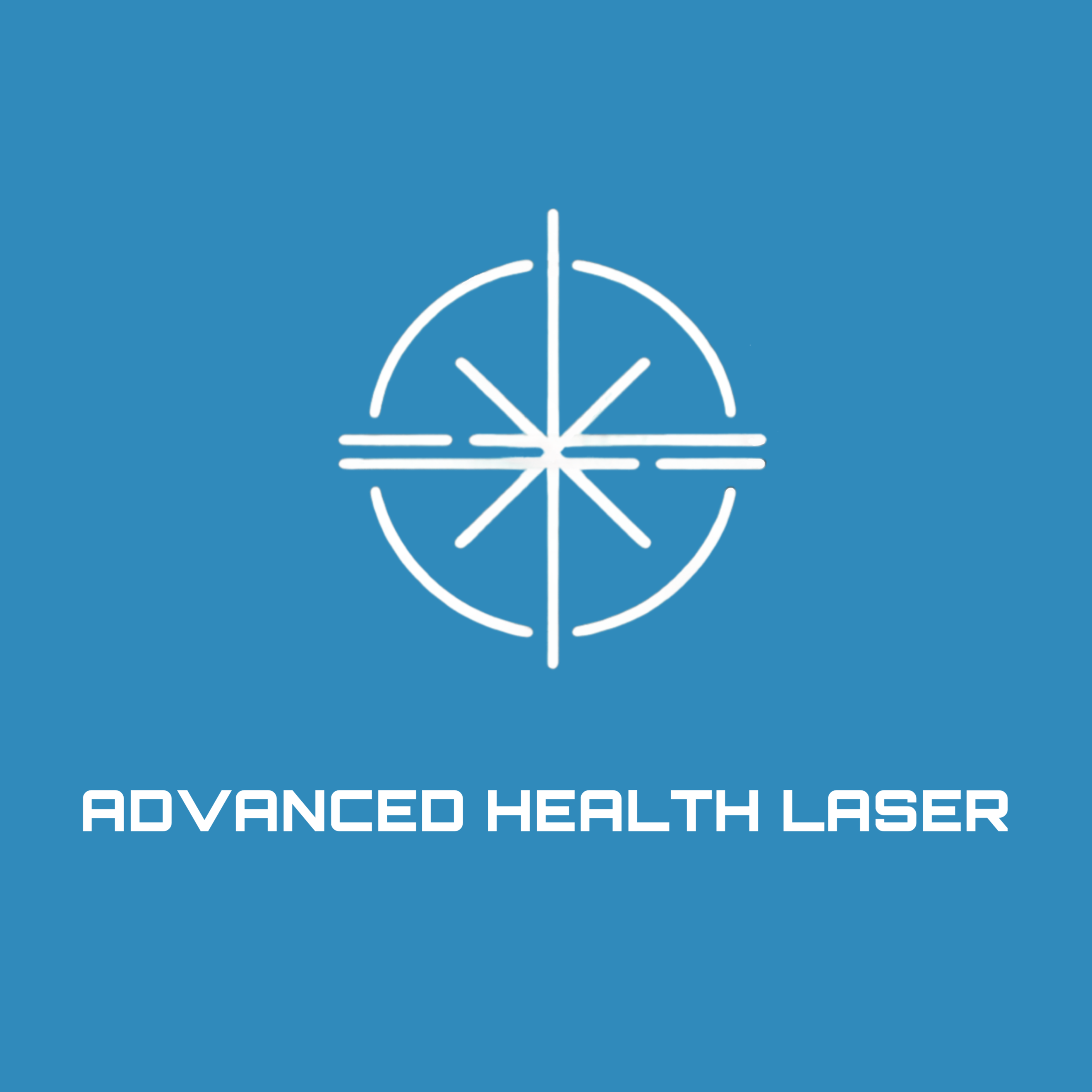
Advanced Laser
